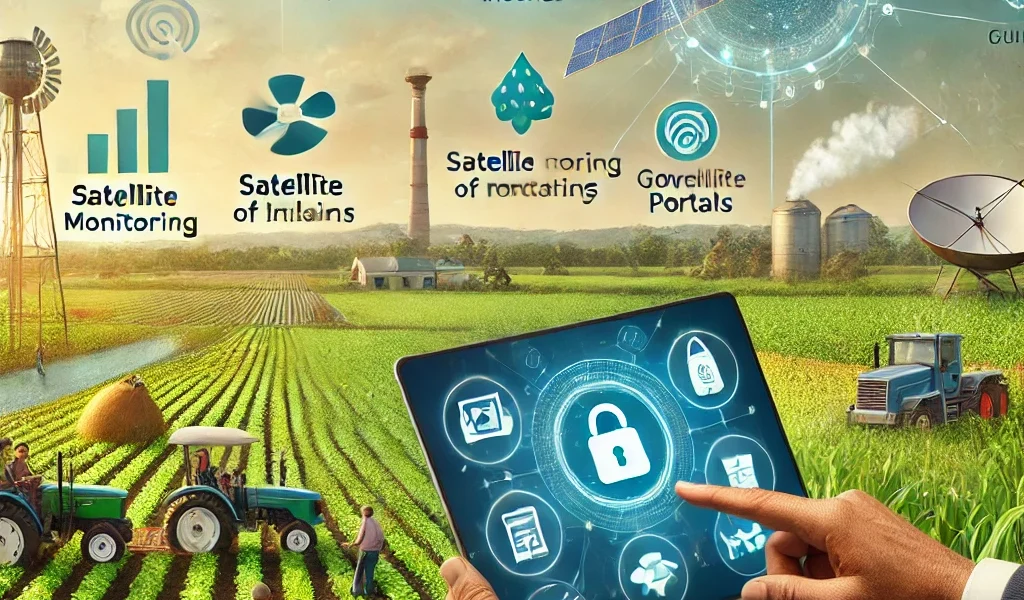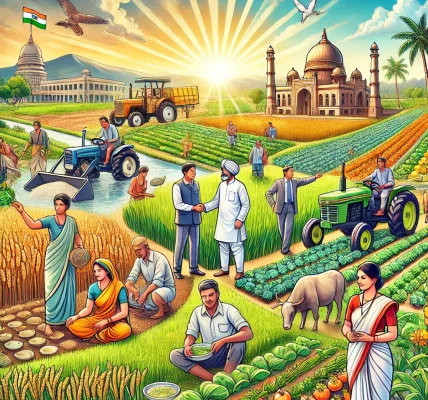How Government Digital Initiatives Are Transforming Agriculture in India (Under Insurance Claims)
Introduction
Agriculture is the backbone of India’s economy, employing nearly 60% of the population. However, farmers often face uncertainties due to unpredictable weather, pest attacks, and market fluctuations. To mitigate risks, the Indian government has introduced several digital initiatives to improve insurance claims processing in agriculture. These initiatives ensure that farmers receive timely financial assistance, reduce paperwork, and enhance transparency.
In this article, we explore how digital technology is revolutionizing agricultural insurance claims, making it more efficient and accessible for farmers.
The Role of Digital Technology in Agricultural Insurance Claims
With the advancement of technology, traditional insurance claim processes are becoming obsolete. The government has introduced various digital platforms, mobile applications, and satellite-based systems to simplify insurance claim settlements. Let’s explore these in detail:
1. Pradhan Mantri Fasal Bima Yojana (PMFBY) and Its Digital Transformation
PMFBY is India’s flagship crop insurance scheme, launched in 2016. Over the years, it has undergone significant digital transformation, including:
- Crop Insurance App: Farmers can register, check policy details, and track claims using the official PMFBY mobile app.
- Remote Sensing and Drone Technology: These technologies assess crop damage more accurately, leading to faster and fairer claim settlements.
- Digitized Land Records Integration: Farmers no longer need to submit multiple documents manually; land records are directly verified through government databases.
These advancements reduce fraud, speed up claim approvals, and enhance efficiency.
2. e-Governance and Online Portals for Farmers
The government has launched multiple e-governance platforms to assist farmers in claiming insurance:
- National Crop Insurance Portal (NCIP): A unified digital platform where farmers can enroll, check policy details, and file claims.
- Common Service Centers (CSCs): Rural centers where farmers can access online insurance services without needing advanced digital literacy.
- Direct Benefit Transfer (DBT) System: Insurance claim settlements are transferred directly to farmers’ bank accounts, eliminating middlemen and reducing corruption.
These initiatives ensure transparency, accountability, and ease of access.
3. Satellite and AI-Based Crop Loss Assessment
To minimize delays in insurance claim processing, the government is leveraging advanced technologies like:
- Satellite Imaging: Helps monitor crops and detect losses due to droughts, floods, and other disasters.
- Artificial Intelligence (AI) and Big Data Analytics: Predicts crop yield and assesses losses, reducing dependency on manual surveys.
- Automated Weather Stations: Provide real-time data on adverse weather conditions that impact crops.
With these technologies, insurance companies can process claims faster and more accurately, benefiting both farmers and insurers.
4. Mobile Applications Empowering Farmers
Several mobile applications have been introduced to facilitate insurance claims:
- PMFBY Mobile App: Farmers can enroll, check policy details, and report crop loss directly.
- Kisan Suvidha App: Provides information on weather, market prices, and insurance claims.
- Meri Fasal Mera Byora: Helps farmers register crop details online, ensuring accurate insurance coverage.
These apps improve accessibility and allow farmers to stay updated on their claim status without intermediaries.
5. Blockchain for Secure and Transparent Transactions
Blockchain technology is being explored to ensure:
- Tamper-Proof Data: Prevents fraudulent claims and misreporting.
- Smart Contracts: Automates the insurance claim process based on pre-defined conditions.
- Instant Verification: Speeds up claim approvals with real-time data verification.
If widely implemented, blockchain could revolutionize the agricultural insurance sector by making it more secure and efficient.
Benefits of Digital Transformation in Agricultural Insurance
The shift to digital processes in agricultural insurance has brought several advantages:
1. Faster Claim Processing
- Digital submission of claims reduces manual paperwork and delays.
- AI and satellite-based assessments ensure quicker claim verification.
2. Increased Transparency
- Online tracking of claims prevents corruption and unauthorized deductions.
- Farmers can directly access claim status updates via mobile apps and portals.
3. Better Accessibility for Farmers
- Rural farmers can visit CSCs for assistance without the need for technical expertise.
- Mobile applications allow claim submissions from anywhere, reducing the need for physical visits.
4. Reduced Dependency on Middlemen
- Direct Benefit Transfer (DBT) ensures that compensation reaches farmers without intermediaries.
- Digital records prevent manipulation and fraud in insurance claims.
5. Accurate and Fair Compensation
- Satellite and AI-based assessments eliminate biases in manual surveys.
- Blockchain ensures the authenticity and security of insurance transactions.
Challenges and Solutions in Implementing Digital Insurance Initiatives
Challenges:
- Lack of Digital Awareness: Many farmers, especially in remote areas, are unaware of digital insurance facilities.
- Connectivity Issues: Rural areas often face internet and mobile network challenges.
- Technical Difficulties: Farmers with limited literacy may struggle to use mobile applications and portals.
- Data Accuracy: Ensuring correct land records and farmer details in government databases is crucial for smooth claim settlements.
Proposed Solutions:
- Farmer Awareness Programs: Conducting training sessions to educate farmers about digital platforms.
- Improved Digital Infrastructure: Expanding rural internet connectivity to ensure smooth access to online services.
- User-Friendly Applications: Designing apps in regional languages with voice assistance to help illiterate farmers.
- Periodic Data Updates: Ensuring accurate land and crop records through regular government surveys and farmer verification.
Conclusion
The digital revolution in agricultural insurance is transforming the way farmers secure their livelihoods against unforeseen risks. Government initiatives like PMFBY, satellite-based assessments, mobile applications, blockchain, and AI-driven solutions are making insurance claim processing faster, more transparent, and efficient.
However, challenges like digital literacy and internet accessibility need further attention. With continued innovation and support, India’s agricultural insurance landscape will evolve to provide farmers with a safety net against uncertainties, ensuring a more resilient and prosperous farming community.
By embracing technology, the government is not only simplifying the insurance claims process but also empowering millions of farmers across the country. The future of agricultural insurance in India is digital, and the transformation is well underway.




